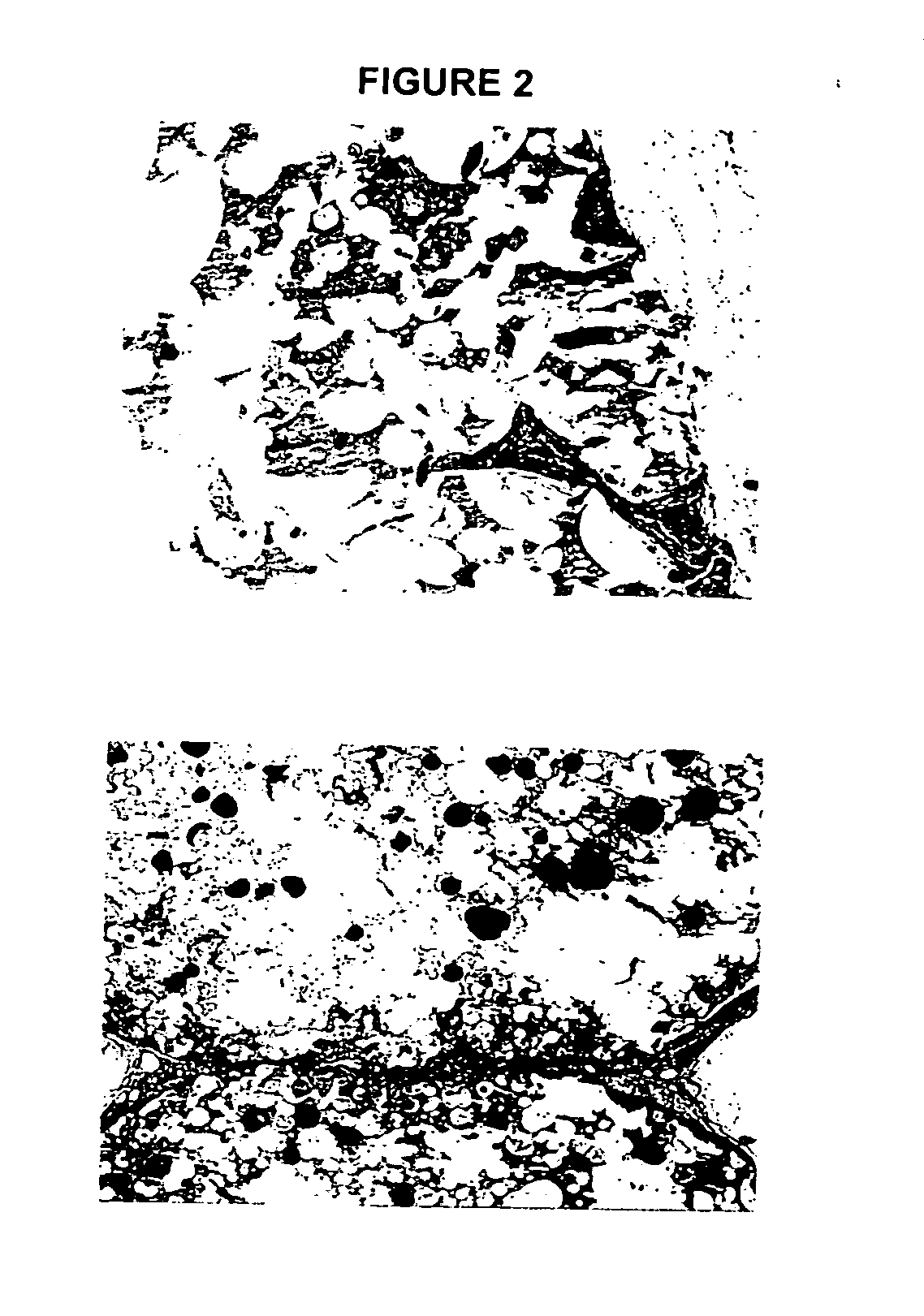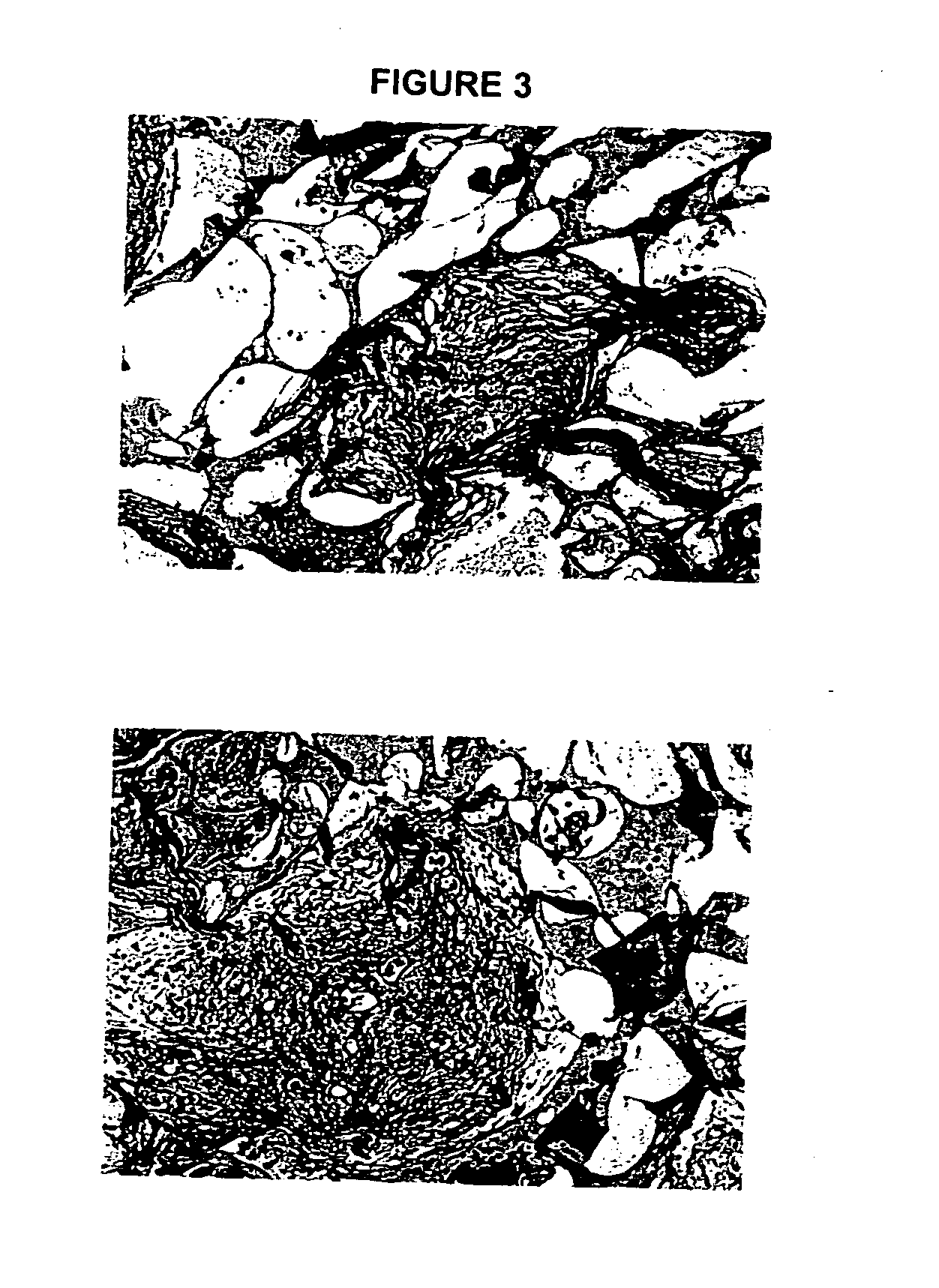Biocompatible polymer compositions for dual or multi staged curing
- Summary
- Abstract
- Description
- Claims
- Application Information
AI Technical Summary
Benefits of technology
Problems solved by technology
Method used
Image
Examples
example 1
[0070] Materials: Polycaprolactone diol (PCLD 400) with molecular weight Mn 400 (Era Polymers or Aldrich) was pre-dried to eliminate any residual water at 90° C. under vacuum (40 mm Hg) for at least 2 hours prior to use. Ethyl 2,6-diisocyanato hexanoate (ELDI) (Kyowa Hakko Kogyo Co. Ltd) was used as received from supplier.
[0071] Procedure: Pre-dried PCL400 (6.0 g, 15 mmoL) was weighed in to a round bottom flask equipped with a magnetic stirrer, a nitrogen inlet and a drying tube. ELDI (8.48 g, 37.5 mmoL) was added to the flask while stirring and heated at 70° C. for two hours under nitrogen. The heating bath was removed and the mixture was stirred over night at room temperature. The resultant product was degassed and stored under a nitrogen atmosphere in the freezer. Stannous 2-ethyl hexanoate (0.1% of total mass) may be employed as a catalyst to accelerate the reaction.
example 2
[0072] Materials: Polycaprolactone diol (PCLD1000) with molecular weight Mn 1000 (Era Polymers or Aldrich) was pre-dried to eliminate any residual water at 90° C. under vacuum (40 mm Hg) for at least 2 hours prior to use. Ethyl 2,6-diisocyanto hexanoate (ELDI) (Kyowa Hakko Kogyo Co. Ltd) was used as received from supplier.
[0073] Procedure: PCL1000 (15.00 g, 15 mmoL) pre-dried as described above was weighed in to a round bottom flask equipped with a magnetic stirrer, a nitrogen inlet and a drying tube. Ethyl 2,6-diisocyanato hexanoate (8.48 g, 37.50 mmoL) was rapidly added to the diol while with rapid stirring at 40° C. and heated at 70° C. for two hours. The heating bath was removed and the mixture was stirred over night at room temperature under a nitrogen atmosphere. The mixture thickened on reaction between the diol and the diisocyanate. The mixture was degassed and stored over nitrogen in the freezer. Stannous 2-ethyl hexanoate (0.1% of total mass) may be employed as a catalyst...
example 3
[0074] Materials: Polycaprolactone diol (PCLD2000) with molecular weight Mn 2000 (Era Polymers or Aldrich) was pre-dried to eliminate any residual water at 90° C. under vacuum (40 mm Hg) for at least 2 hours prior to use. Ethyl 2,6-diisocyanato hexanoate (ELDI) (Kyowa Hakko Kogyo Co. Ltd) was used as received from supplier.
[0075] Procedure: PCL2000 (7.50 g, 3.75 mmoL) pre-dried as described above was weighed in to a round bottom flask equipped with a magnetic stirrer, a nitrogen inlet and a drying tube. Ethyl 2,6-diisocyanato hexanoate (2.11 g, 9.38 mmoL) was rapidly added to the diol while with rapid stirring at 40° C. and heated at 70° C. for two hours. The heating bath was removed and the mixture was stirred over night at room temperature under a nitrogen atmosphere. The mixture thickened on reaction between the diol and the diisocyanate. The mixture was degassed and stored over nitrogen in the freezer. At ambient temperature the mixture is a solid, however, melts at 70° C.
PUM
| Property | Measurement | Unit |
|---|---|---|
| Fraction | aaaaa | aaaaa |
| Fraction | aaaaa | aaaaa |
| Fraction | aaaaa | aaaaa |
Abstract
Description
Claims
Application Information
 Login to View More
Login to View More - R&D
- Intellectual Property
- Life Sciences
- Materials
- Tech Scout
- Unparalleled Data Quality
- Higher Quality Content
- 60% Fewer Hallucinations
Browse by: Latest US Patents, China's latest patents, Technical Efficacy Thesaurus, Application Domain, Technology Topic, Popular Technical Reports.
© 2025 PatSnap. All rights reserved.Legal|Privacy policy|Modern Slavery Act Transparency Statement|Sitemap|About US| Contact US: help@patsnap.com



